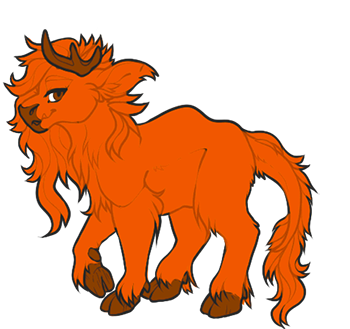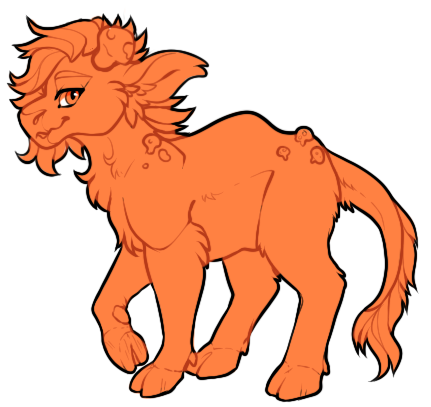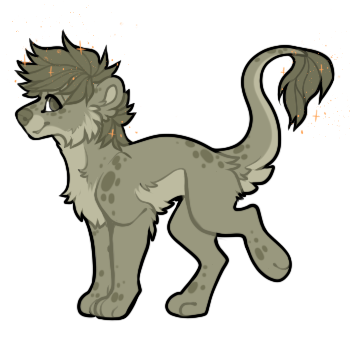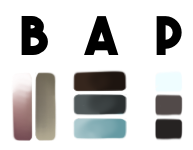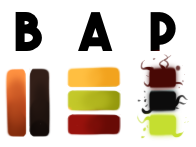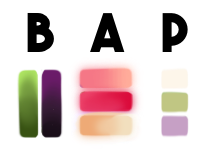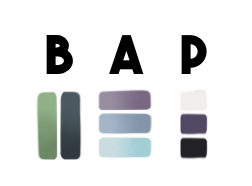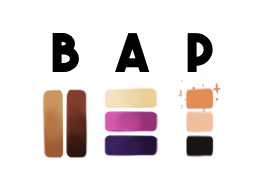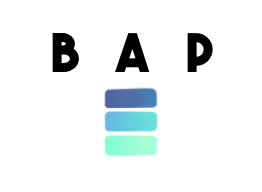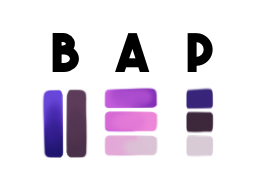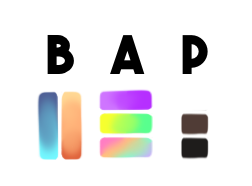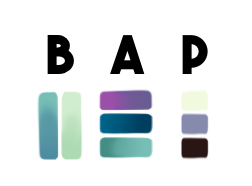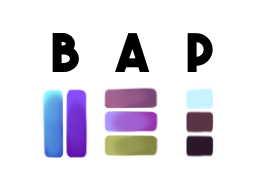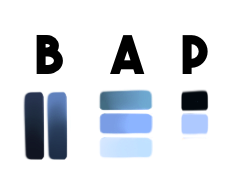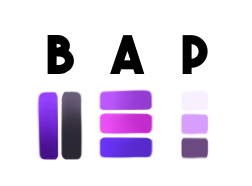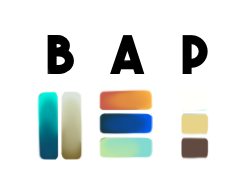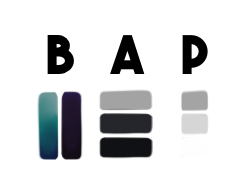Traits
Paw Size (Uncommon)
Kiamaras with this trait have paws that are either larger or smaller than average.
This does not have to be symmetrical, nor does this need to affect all paws.
You can even have Kiamaras with larger and smaller paws.
Kiamaras with this trait attached to their trait list will have it listed with the size of paws they have:
- Paw Size (Bigger)
- Paw Size (Smaller)
- Paw Size (Bigger and Smaller)
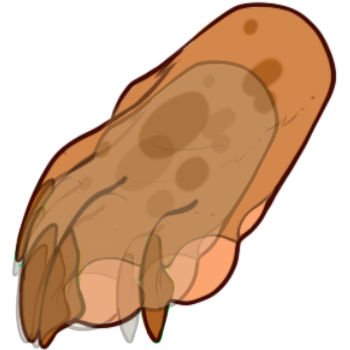
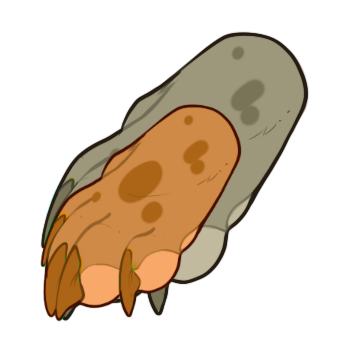
Slightly Larger Canines (Uncommon)
Kiamaras with this trait have tusks or fangs that are too large to be considered Snaggle Teeth, but are too small to be considered Larger Canines.
Fangs Must reach the chin line.
Tusks must reach the beginning of the nose ridge.
Neither Fangs nor Tusks can be larger than these guides for this trait.
The teeth must reach these guidelines and cannot be smaller nor bigger. This is due to smaller teeth being considered Snaggle Teeth and larger ones being considered Larger Canines.
For other line sets, you simply need to reach the parts of the facial structure shown in these examples.


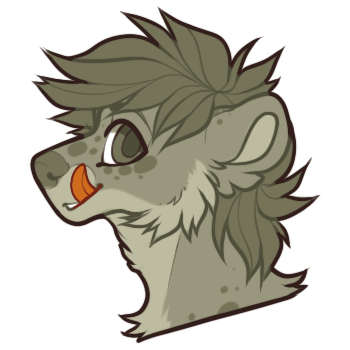
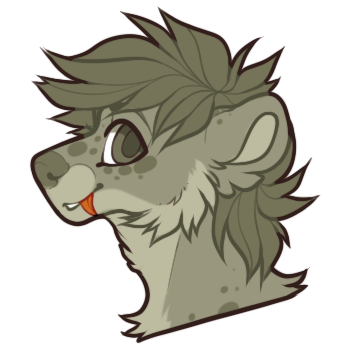
Single-Placed Sparkle (Uncommon)
This Kiamara Sparkles on one part of their body.
- Horns, should they have them.
- Eyes
- Nose
- Pawpads
- Claws
- A singular limb
- A singular marking/batch of markings on one limb.
- The main body
- Neck
- Face
- Ears
- Hair (both head, tail, and mane all count as one)
- On a body modification
Acre Gene (Uncommon)
This trait grants the Dromedairy the Acre colour pallette.
This gene is only guaranteed from single-parent breeding of a Acre Dromedairy.
If a dromedairy has this gene as recessive, in order for offspring to obtain it the other parent must either have this gene as a dominant gene, or a recessive gene.
Cannot pass to offspring as a dominant gene if only one parent carries the recessive gene and has a 75% chance of becoming dominant if both parents have it as recessive if rolled in a breeding.
Infected Gene (Uncommon)
This trait grants the Dromedairy the Infected colour pallette.
This gene is only guaranteed from single-parent breeding of a Parasitic Dromedairy.
All Piebald colours glow, have tendril-like whisps, and sparkle.
If a dromedairy has this gene as recessive, in order for offspring to obtain it the other parent must either have this gene as a dominant gene, or a recessive gene.
Cannot pass to offspring as a dominant gene if only one parent carries the recessive gene and has a 75% chance of becoming dominant if both parents have it as recessive if rolled in a breeding.
Deceiver Gene (Uncommon)
This trait grants the Dromedairy the Deceiver colour pallette.
This gene is only guaranteed from single-parent breeding of a Fungal Dromedairy.
If a dromedairy has this gene as recessive, in order for offspring to obtain it the other parent must either have this gene as a dominant gene, or a recessive gene.
Cannot pass to offspring as a dominant gene if only one parent carries the recessive gene and has a 75% chance of becoming dominant if both parents have it as recessive if rolled in a breeding.
Grimoire (Uncommon)
This trait grants the Dromedairy the Echeveria colour pallette.
This gene is only guaranteed from Droma made in the 2025 Staff Batch
If a dromedairy has this gene as recessive, in order for offspring to obtain it the other parent must either have this gene as a dominant gene, or a recessive gene.
Cannot pass to offspring as a dominant gene if only one parent carries the recessive gene and has a 75% chance of becoming dominant if both parents have it as recessive if rolled in a breeding.
Overdone (Uncommon)
This trait grants the Dromedairy the Overdone colour pallette.
This gene is only guaranteed from single-parent breeding of a Pancake Dromedairy.
If a dromedairy has this gene as recessive, in order for offspring to obtain it the other parent must either have this gene as a dominant gene, or a recessive gene.
Cannot pass to offspring as a dominant gene if only one parent carries the recessive gene and has a 75% chance of becoming dominant if both parents have it as recessive if rolled in a breeding.
Dissolved Rift Gene (Uncommon)
This trait grants the Dromedairy the Dissolved Rift gene that works differently than most colouration traits.
In breedings, this can be passed down as either a dominant or recessive gene.
If a dromedairy has this gene as recessive, in order for offspring to obtain it the other parent must either have this gene as a dominant gene, or a recessive gene.
Cannot pass to offspring as a dominant gene if only one parent carries the recessive gene and has a 75% chance of becoming dominant if both parents have it as recessive if rolled in breeding.
Those who have this colouration have their Accent colour palette on their current dominant colouration replaced with the colours of this gene.
Stiltonberry Gene (Uncommon)
This trait grants the Dromedairy the Stiltonberry colour pallette.
In breedings, this can be passed down as either a dominant or recessive gene.
The bottom accent colour can change colour from orange to blue, similar to a Kiamara's Colourchanging Markings Trait.
These are the only two colours that can change to their counterpart.
If a dromedairy has this gene as recessive, in order for offspring to obtain it the other parent must either have this gene as a dominant gene, or a recessive gene.
Cannot pass to offspring as a dominant gene if only one parent carries the recessive gene and has a 75% chance of becoming dominant if both parents have it as recessive if rolled in a breeding.
Dusk Cookie Gene (Uncommon)
This trait grants the Dromedairy the Dusk Cookie colour pallette.
In breedings, this can be passed down as either a dominant or recessive gene.
If a dromedairy has this gene as recessive, in order for offspring to obtain it the other parent must either have this gene as a dominant gene, or a recessive gene.
Cannot pass to offspring as a dominant gene if only one parent carries the recessive gene and has a 75% chance of becoming dominant if both parents have it as recessive if rolled in a breeding.
Butterfly Gene (Uncommon)
This trait grants the Dromedairy the Butterfly colour pallette.
This gene is only guaranteed from single-parent breeding of a Fae Dromedairy.
If a dromedairy has this gene as recessive, in order for offspring to obtain it the other parent must either have this gene as a dominant gene, or a recessive gene.
Cannot pass to offspring as a dominant gene if only one parent carries the recessive gene and has a 75% chance of becoming dominant if both parents have it as recessive if rolled in a breeding.
Echeveria Gene (Uncommon)
This trait grants the Dromedairy the Echeveria colour pallette.
This gene is only guaranteed from Droma made in the 2023 Staff Batch
If a dromedairy has this gene as recessive, in order for offspring to obtain it the other parent must either have this gene as a dominant gene, or a recessive gene.
Cannot pass to offspring as a dominant gene if only one parent carries the recessive gene and has a 75% chance of becoming dominant if both parents have it as recessive if rolled in a breeding.
Asterose Gene (Uncommon)
This trait grants the Dromedairy the Asterose colour pallette.
If a dromedairy has this gene as recessive, in order for offspring to obtain it the other parent must either have this gene as a dominant gene, or a recessive gene.
Cannot pass to offspring as a dominant gene if only one parent carries the recessive gene and has a 75% chance of becoming dominant if both parents have it as recessive if rolled in a breeding.
Fairytale Gene (Uncommon)
This trait grants the Dromedairy the Fairytale gene that works differently than most colouration traits.
In breedings, this can be passed down as either a dominant or recessive gene.
If a dromedairy has this gene as recessive, in order for offspring to obtain it the other parent must either have this gene as a dominant gene, or a recessive gene.
Cannot pass to offspring as a dominant gene if only one parent carries the recessive gene and has a 50% chance of becoming dominant if both parents have it as recessive if rolled in breeding.
Those who have this colouration have their dominant piebald colours replaced with the colours on this gene and all piebald sparkles.
Basalt Gene (Uncommon)
This trait grants the Dromedairy the Basalt colour pallette.
This gene is only guaranteed from single-parent breeding of a Beach Dromedairy.
If a dromedairy has this gene as recessive, in order for offspring to obtain it the other parent must either have this gene as a dominant gene, or a recessive gene.
Cannot pass to offspring as a dominant gene if only one parent carries the recessive gene and has a 75% chance of becoming dominant if both parents have it as recessive if rolled in a breeding.
Fulmination Gene (Uncommon)
This trait grants the Dromedairy the Fulmination colour pallette.
This gene is only guaranteed from single-parent breeding of a Thunder Plain Dromedairy.
If a dromedairy has this gene as recessive, in order for offspring to obtain it the other parent must either have this gene as a dominant gene, or a recessive gene.
Cannot pass to offspring as a dominant gene if only one parent carries the recessive gene and has a 75% chance of becoming dominant if both parents have it as recessive if rolled in a breeding.
Reef Gene (Uncommon)
This trait grants the Dromedairy the Reef colour pallette.
This gene is only guaranteed from single-parent breeding of an Abyssal Dromedairy.
If a dromedairy has this gene as recessive, in order for offspring to obtain it the other parent must either have this gene as a dominant gene, or a recessive gene.
Cannot pass to offspring as a dominant gene if only one parent carries the recessive gene and has a 75% chance of becoming dominant if both parents have it as recessive if rolled in a breeding.
Glaze Gene (Uncommon)
This trait grants the Dromedairy the Glaze colour pallette.
This gene is only guaranteed from single-parent breeding of a Yeti Dromedairy.
If a dromedairy has this gene as recessive, in order for offspring to obtain it the other parent must either have this gene as a dominant gene, or a recessive gene.
Cannot pass to offspring as a dominant gene if only one parent carries the recessive gene and has a 75% chance of becoming dominant if both parents have it as recessive if rolled in a breeding.

